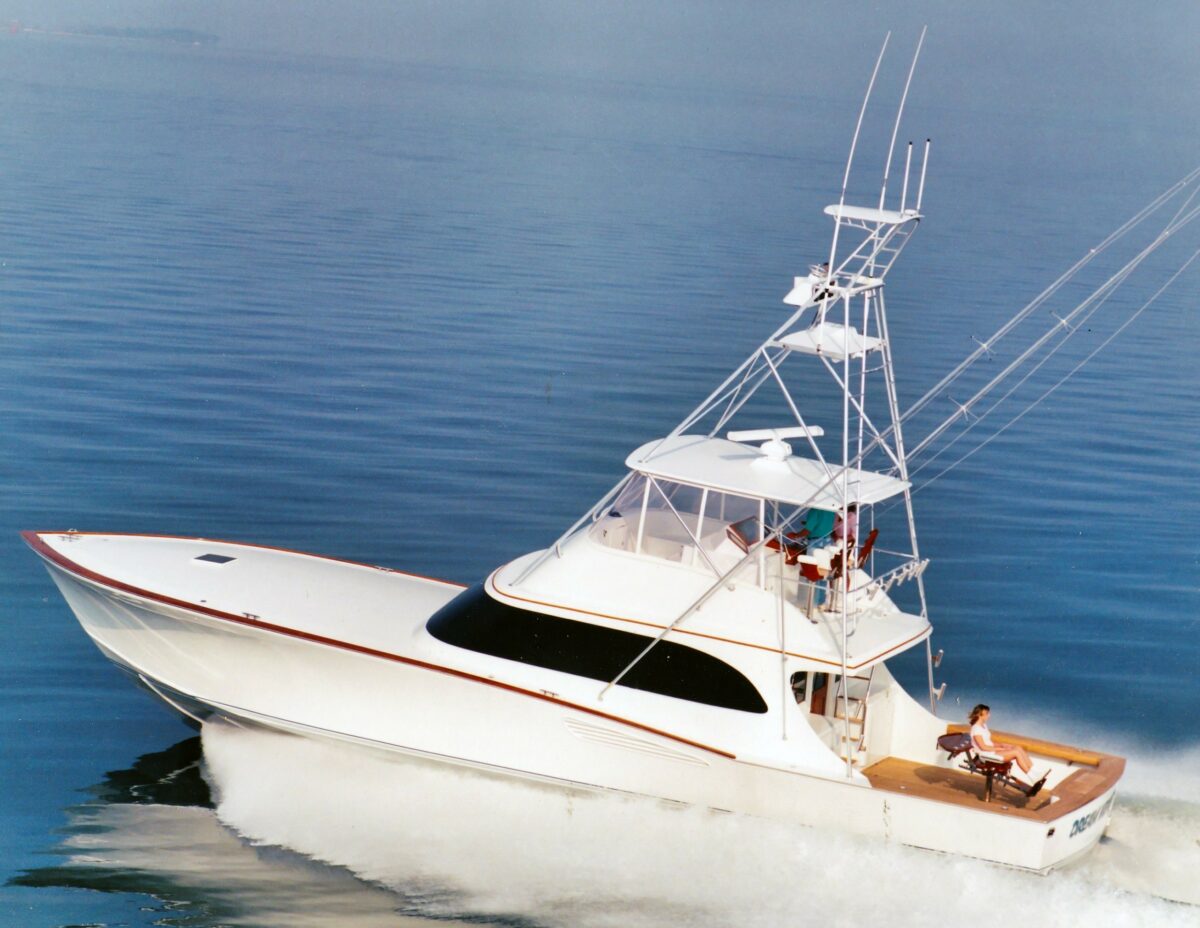 More than Skin Deep: Modern Boat Construction Techniques
More than Skin Deep: Modern Boat Construction Techniquesby Ric Burnley Close your eyes and imagine your dreamboat: She eighty feet long, greyhounding effortlessly through the waves at 40 knots. Spray flying off the gleaming hull. Sun sparkling off the full tower. A bridge packed with modern electronics. Inside, rare woods and fine leather. Fully stocked with all the tackle you could imagine, and then some. But did you envision fully encapsulated stringers? What about vinylester resin, fiberglass infusion and a PVC core¦no? At the heart of every boat is either wood or polyvinyl chloride (PVC) foam. The base material determines what method will be used to build the boat. While the final products look similar, the performance can be quite different. When it comes to boat building, beauty is more than skin deep. Stick Built Wooden sportfishing boats are built in one of two ways: plank on frame or jig. At his Mann Harbor, North Carolina boatworks, Capt. Paul Mann uses both methods to produce boats up to 81 feet. Like many Carolina boat builders, Mann started out building plank on frame hulls. The traditional method constructs the boat from the keel up. First, the keel, bow and stern are laid out. Then longitudinal battens shape the bottom, intermediate and sheer. Battens are the holy grail, Mann explains, and a good set will be passed down from generation to generation. Frames are installed between the battens. Then the bulkheads are installed. Next, the boat is covered with ¾-inch-by-3 ½-inch horizontal planks. Then, a layer of fiberglass covers the planks. A layer of ¼-inch Okume plywood is added to the outside and glassed over to provide a smooth finish. Finally, a layer of glass is applied to the inside to completely encapsulate the wood. Although the process isnt as popular, Mann says plank-on-frame construction offers many advantages. The boat is lighter than a jig construction or even composite, he states. The weight savings translates into fuel savings. Mann praises plank-on-frame because it offers more points to attach mechanical systems and because hydraulic lines can run from one side of the boat to the other.Mechanical guys love plank on frame boats, he adds Mann even dispels some of the myths surrounding plank on frame construction. People think that plank on frame reduces……………. (To continue reading this article in digital or print click here) You can also subscribe to InTheBite The Magazine to enjoy more industry leading editorial.








